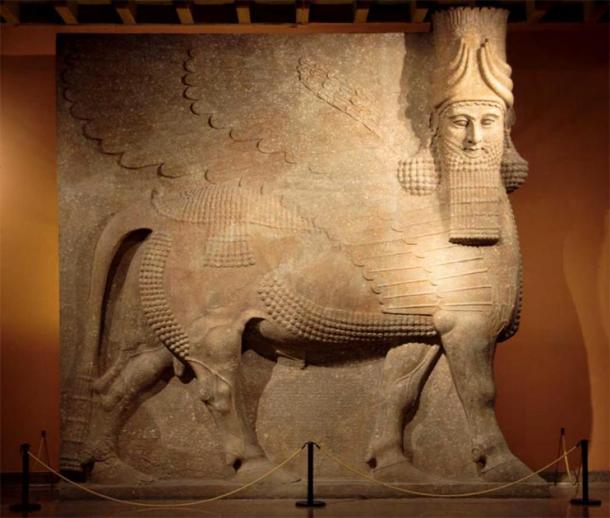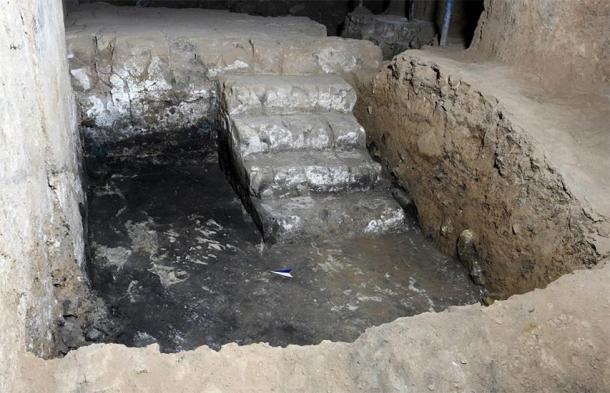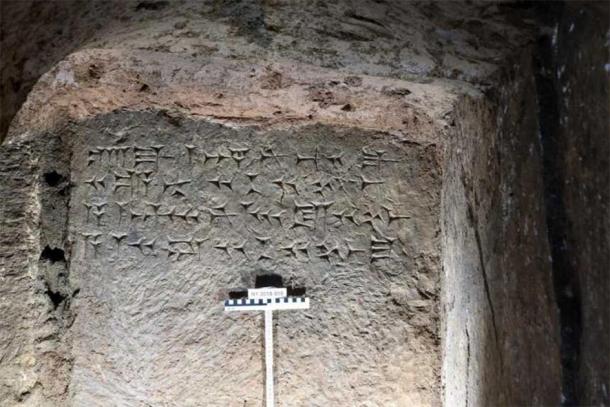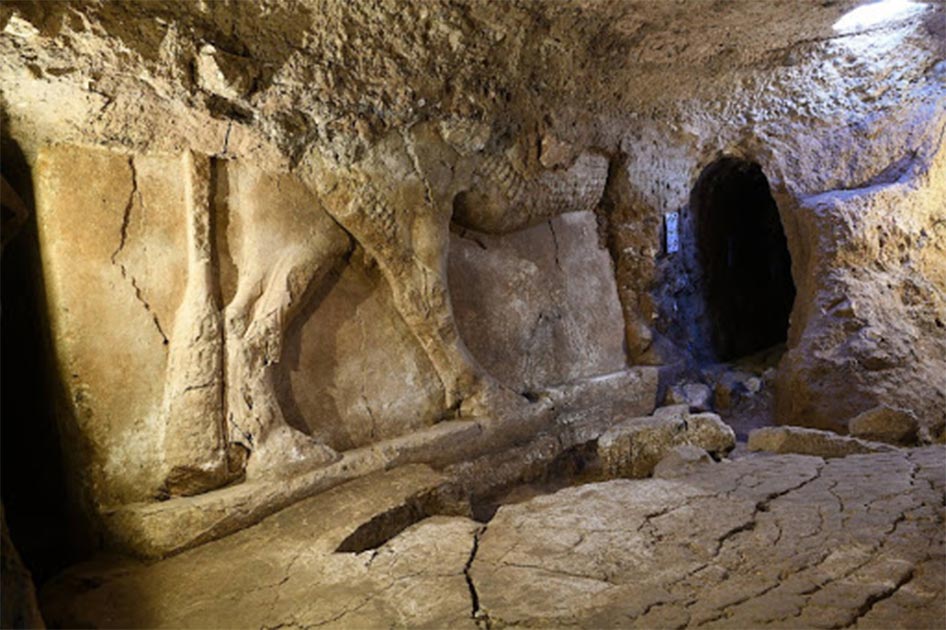Assyrian Palace Discovered in Terrorists’ Treasure Tunnels
On June 4, 2014, the Northern Iraq offensive began when the Islamic State of Iraq and the Levant (ISIL; sometimes referred to as the Islamic State (IS)) launched a major offensive against government forces in northern Iraq. On June 10, IS captured Mosul, approximately 400 km (250 mi) north of Baghdad on the west bank of the Tigris, opposite the ancient Assyrian city of Nineveh on the East bank. The terrorists dynamited several archaeological sites and dug treasure tunnels while searching for artifacts.
Now, German archaeologists and researchers from the University of Heidelberg have explored an ancient palace in Mosul that is located within the terrorists’ treasure tunnels. According to a report on News Network Archaeology the palace was only accessible because the area was “blown up by the Islamic State (IS) terrorist militia.”
On a hill above the alleged grave of the biblical prophet Jonah, beneath a destroyed mosque, a military palace of the Assyrian Empire and a temple dating back to the 5th or 6th century BC is adorned with a winged bull and four ancient reliefs depicting Assyrian mythological Dwellers on the Threshold, or gatekeepers.
- The Powerful Assyrians, Rulers of Empires
- Nineveh: Exploring the Ruins of the Crown City of Ancient Assyria
- Tragedy as militants bomb 2,700-year-old Nineveh Wall in Iraq

This 40 ton statue was one of a two flanking the entrance to the throne room of King Sargon II. A protective spirit known as a lamassu, it is shown as a composite being with the head of a human, the body and ears of a bull, and the wings of a bird. (Trjames/CC BY SA 3.0)
Dangerous Digging in War Torn Landscapes
In 2014, ISIS blew up a beautiful 12th-century mosque because, according to Atlantic.com, they believed it held the tomb of the prophet Jonah (the Nebi Yunus shrine). They tunneled several hundred meters beneath the rubble looking for treasure and artifacts to sell.
Within this rabbit warren of tunnels dug by the terrorists, the German scientists discovered archaeological treasures, including a 2,000-year-old, 55 meter (180 ft.) long, “throne room”, which was associated with the military palace. The temple and its carvings date to the final period of the once vast Assyrian empire which dominated Mesopotamia. The great city of Nineveh was once the largest in the world.

Stairs to the podium in the throne room of the palace. (Ali Al-Magasees/Heidelberg University/dpa)
A 2018 article in The Guardian said the initial discovery was “a rare piece of good news in the context of so much deliberate destruction and looting by Isis of pre-Islamic archaeology.” British Museum archaeologists worked with Iraq archaeologist, Saleh Noman, who was in the first group of Iraqi archaeologists trained in London to survey and rescue war damaged archaeology.
The Iraq Museum's Iraq Emergency Heritage Management Training Scheme began in 2015 to help combat the many threats to the country's archaeology, and Sebastien Rey, lead archaeologist at the Iraq Emergency Heritage Management Programme at the British Museum, told The Guardian that the “reliefs are unique with features which we have not seen anywhere else.”
What’s more, he said the archaeologists are incredibly brave working in “extreme danger”, with the mudbrick in danger of collapse at any time.

Wall panel with a palace inscription of the Assyrian king Asarhaddon (680-669 BC). (Ali Al-Magasees/Heidelberg University/dpa)
Extremists Dug the Treasure Tunnels
In December 2016, a U.S.-led coalition backed thousands of Iraqi and Kurdish troops in a massive military operation to take back Mosul, the country’s second-largest city, and government forces eventually drove ISIS militants from the area around the Nebi Yunus shrine. The first local archaeologists on the scene reported that ISIS had dug tunnels deep beneath the holy site searching for treasures and artifacts to sell on the black market.
- Shock Find! Assyrian Palace from 600 BC Discovered Under Demolished Shrine in Iraq
- Lost Codes Discovered in Terrorist’s Treasure Tunnel
- Ashurbanipal: The Oldest Surviving Royal Library in the World with Over 30,000 Clay Tablets
Then they discovered the treasure tunnels led straight to a previously undiscovered and untouched palace. In 2018 archaeologist Layla Salih told The Telegraph she could only “imagine how much Daesh [Arabic term for ISIS] discovered down there before we got here.”
At first sight it does appear extreme to blow up a mosque and to tunnel hundreds of meters into stone, it is certainly not acceptable, but consider the numbers: in 2017 The Middle East Observer reported that at The Unesco conference in Paris the deputy Iraqi culture minister, Qais Rashid, said, “in the Mosul region alone at least 66 archaeological sites had been destroyed by ISIS,” and that Muslim and Christian places of worship had suffered “massive destruction”, and thousands of manuscripts had been looted.
Mr. Rashid’s analysis suggested ISIS was funding it’s acts by smuggling oil (up to $1.645m a day), kidnapping (at least $20m last year), people trafficking, extortion, robbery and last – but not least - “the sale of antiquities.” For example, the sale of looted items from al-Nabuk, west of Damascus, is reported to have earned ISIS $36m.
Top Image: A total of four such reliefs of Assyrian gatekeeper figures were found in the palace within the terrorists’ treasure tunnels. Source: Ali Al-Magasees/Heidelberg University/dpa
By Ashley Cowie



















